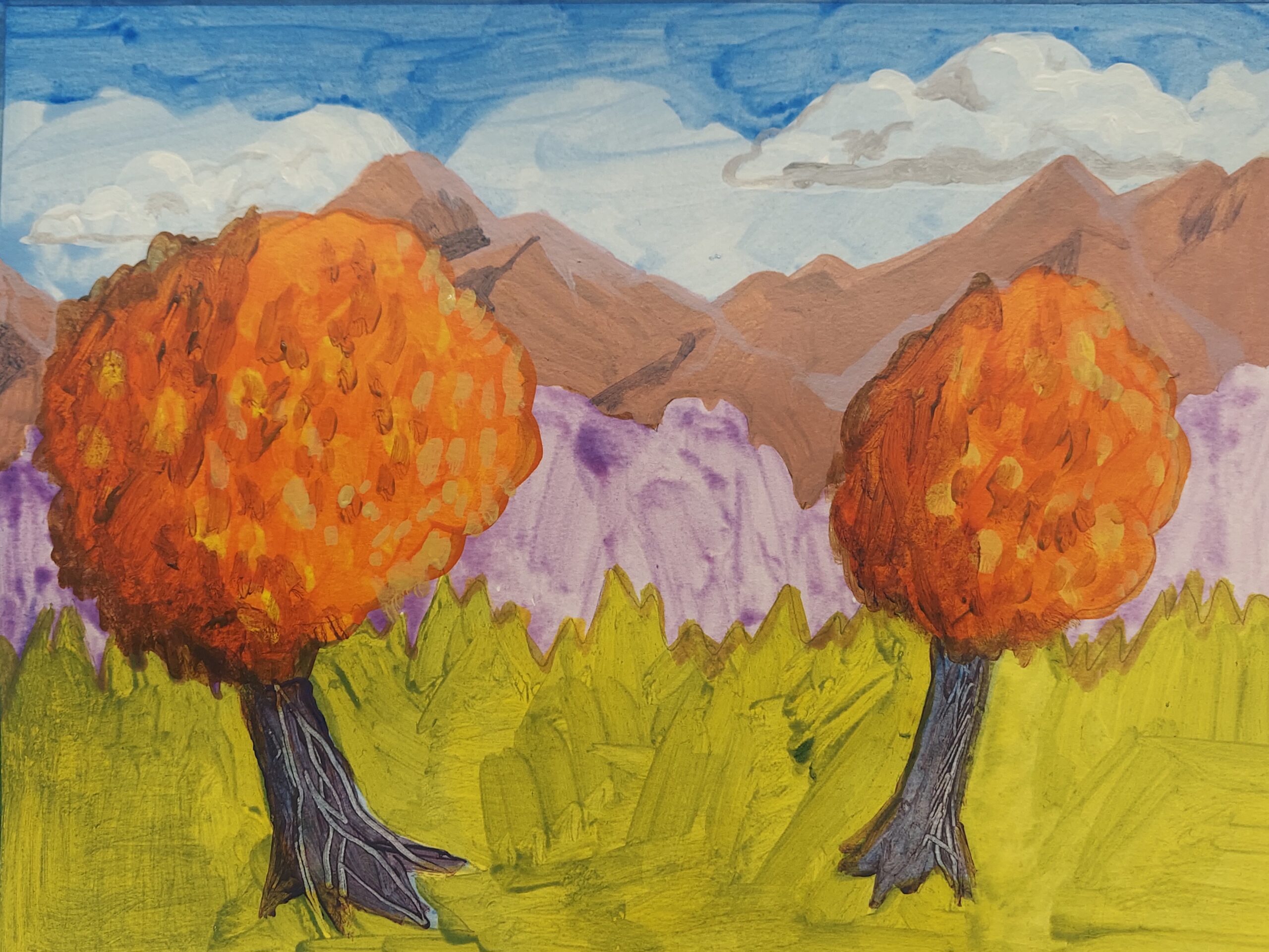Overview
Students will continue to develop their expressive landscapes by adding layers and small elements. They will begin to create the illusion of space by building up darker values (shadows) in the foreground and middle ground of their paintings.
Materials and Tools
- Tempera cake set or acrylic paint in plastic containers—red, yellow, blue, and white
- Water containers
- Variety of paint brushes
- Painting from previous week
- Sponge or paper towels
- Landscape reference images
Objectives
Students will understand that:
- Artists can show the time of day or season by using colors or including shadows.
- Objects in the foreground can often appear larger, darker, and more detailed than those in the rest of the painting.
- Artists can use small brushes to paint tiny details.
Students will be able to:
- Convey a time of day or season in their painting, if desired.
- Use shades to develop details in the foreground of their expressive landscape.
- Use tiny brushes to add details.
Activities
Close Looking:
Give students a few minutes to look closely at the painting above by Shara Hughes.
Then, ask the following questions:
- What colors do you notice in this painting?
- What time of day do you think this is? How can you tell?
- What season do you think this might be? How can you tell?
- Look at the plants and grass in the foreground.
- Where do you see darker values? Lighter values?
- Where do you see the larger, more detailed plants and grass? Where are the plants and grass smaller and less detailed?
- Brush strokes are marks made by the bristles of a paint brush as it moves across a surface.
Where do you see brushstrokes in this painting? How would you describe them?
Explain to students that the artist painted the features closest to us in the foreground larger, darker, and with more details than objects in the middle ground or background to make them appear closer to us. In real life, objects in the background are farthest away so they appear lighter, smaller, and less detailed in relation to other objects that are closer to us.
Model
Adding dynamic marks and brush strokes to create expression.
Adding darker values and details to elements in the foreground and middle ground to create depth and dimension. Use a tiny brush to add details.
Choosing a time of day or season for your painting and changing colors appropriately.
Work Time:
As students continue to develop their landscape, encourage them to:
- Add shadows and details to elements in the foreground and middle ground to create depth and dimension.
- Convey a time of day or season in their painting, if desired.
- Use tiny brushes to add details.
- Add dynamic marks and brush strokes to create expression.

Reflection
- What’s an important element you developed today?
- How did you do it?
Vocabulary
Shadow, foreground, brushstroke
